Colorado is a treasure trove for stargazing enthusiasts, offering an opportunity to witness the magical beauty of the Milky Way. The clear skies and numerous dark-sky locations make Colorado an ideal destination for marveling at the glimmering stars that compose our galaxy.
In Colorado, you can explore several prime locations for viewing the Milky Way, such as the Great Sand Dunes National Park, Horsetooth Reservoir, and several International Dark Sky Parks.
Before you embark on your stargazing adventure, it’s essential to understand the factors that impact the visibility of the Milky Way, such as light pollution and timing. Additionally, familiarize yourself with the resources and events available in Colorado that can enhance your experience, like astronomer-led star parties and astrophotography opportunities.
In a Nutshell
- Prime Colorado locations for viewing the Milky Way include Great Sand Dunes National Park and International Dark Sky Parks.
- Light pollution and timing play significant roles in the visibility of the stars and the Milky Way.
- Colorado offers additional resources and events, such as astrophotography and star parties, to enrich the stargazing experience.
In this article, you get to
Discover Prime Stargazing Locations: You can explore some of the best stargazing spots in Colorado, including the Great Sand Dunes National Park and other International Dark Sky Parks.
Understand the Milky Way: You will better understand the Milky Way, our home galaxy, and answer the key question, “Where can you see the Milky Way in Colorado?”
Tips for Successful Stargazing: You’ll learn valuable tips for successful stargazing, such as the importance of location and timing for Milky Way viewing.
Top Colorado Stargazing Spots: Find out about locations like Westcliffe and Silver Cliff, Mount Evans Scenic Byway, and more, where you can enjoy breathtaking views of the Milky Way.
Preparation Essentials: Discover what items to pack for your stargazing adventure, including flashlights, telescopes or binoculars, and warm clothing.
Impact of Light Pollution: Understand how light pollution affects stargazing and the efforts made by some communities in Colorado to combat it.
Importance of Timing: Learn the significance of choosing the right time for stargazing, including moon phases and Milky Way visibility.
Stargazing Events and Resources: Find information about Colorado national parks, observatories, and stargazing events to enhance your experience.
Astrophotography Opportunities: Discover locations in Colorado where you can engage in astrophotography and capture stunning images of the night sky.
Unique UFO Watchtower Experience: Learn about the UFO Watchtower in Colorado, a special attraction that combines stargazing with the possibility of spotting UFOs.
By the end of this article, you’ll be equipped with the knowledge and inspiration to embark on an unforgettable stargazing journey in Colorado, enabling you to appreciate the mesmerizing beauty of the Milky Way and the wonders of the night sky like never before.
Let’s dive right in.
Where Can you see the Milky Way in Colorado?
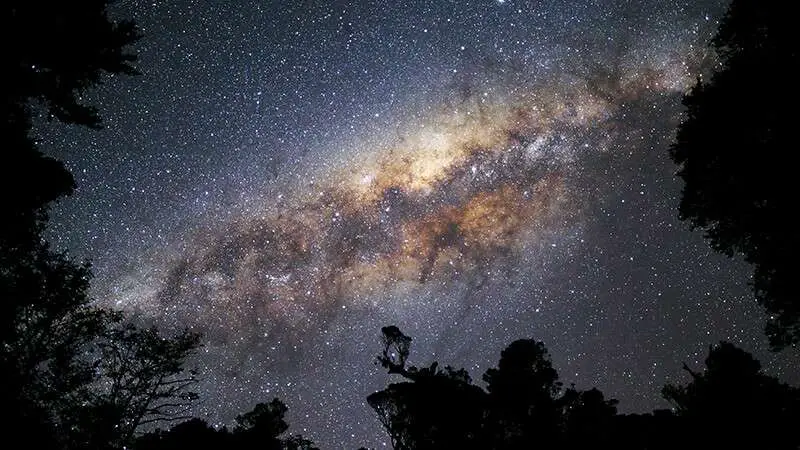
The Milky Way is our home galaxy, full of billions of stars, including our Sun. When you gaze at the night sky in Colorado, you’re witnessing the beauty of the stars and seeing a part of the Milky Way itself.
Colorado offers excellent stargazing opportunities with its expansive dark skies and high elevation.
Here are a few tips to help you get started on your Milky Way viewing journey:
- Location matters: To see the Milky Way, you need to be in a place with minimal light pollution. This can be achieved by heading away from city lights and finding a darker area, like a remote park, campsite, or designated stargazing spot.
- Timing is critical: The Milky Way is best viewed during summer, particularly between the end of May and early August. Our galaxy’s core is more visible during these times, making it easier to spot.
Here are some of the best places in Colorado to view the Milky Way:
- Westcliffe and Silver Cliff: These two towns have been designated as dark sky communities, making them perfect spots for stargazing.
- Mount Evans Scenic Byway: Drive up to the highest paved road in North America, located just 60 miles west of Denver, for an unforgettable nighttime sky-viewing experience.
- Great Sand Dunes National Park: After a day of exploring the sandy landscapes, set up your chair and gaze at the breathtaking night sky.
Read my dedicated article for a complete list of the Best Stargazing in Colorado.

FREE STARGAZING CHECKLIST
My 5-page Stargazing Checklist will enhance your astronomical observations.
Follow this free checklist to navigate the night sky with confidence, clarity, and a sense of preparedness for a rewarding stargazing experience.

Interacting With The Night Sky in Colorado
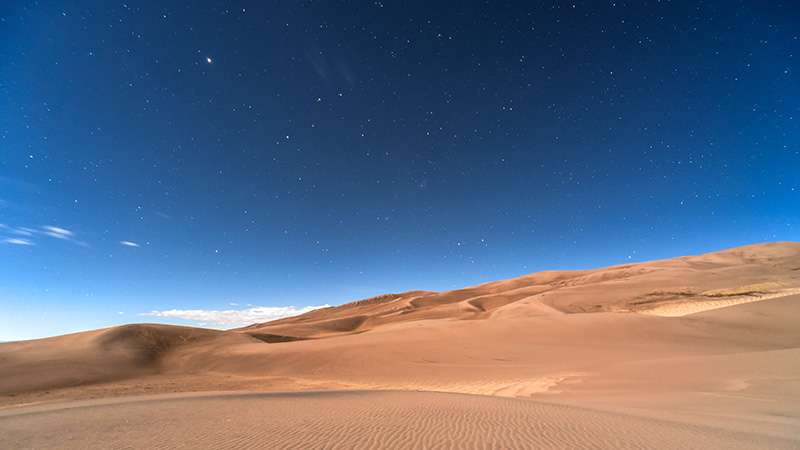
Colorado offers impressive opportunities for stargazing and experiencing the night sky.
With locations such as Great Sand Dunes National Park and Rocky Mountain National Park, you can witness the Milky Way with your own eyes.
Here are some helpful tips for your night sky adventure:
- Choose the right spot: Some top stargazing locations in Colorado include Great Sand Dunes National Park, Rocky Mountain National Park, and the dark sky communities of Westcliffe and Silver Cliff. These places have reduced light pollution, making for excellent star-filled views.
- Pick the perfect timing: The best time for stargazing in Colorado is during a new moon when there is no light from the moon. This allows even the dimmest stars to shine brightly. Clear, cloudless nights are also essential for unobstructed sky-gazing.
- Pack the essentials: Bring a warm blanket, comfortable seating, and a red-filtered flashlight to preserve your night vision. Don’t forget binoculars or a telescope if you have one – they’ll enhance your stargazing experience.
While exploring the night sky in Colorado, remember these simple steps:
- Allow your eyes to adjust to the darkness for about 15-20 minutes.
- Use a stargazing app or star chart to help identify constellations and planets.
- Watch for shooting stars, satellites, and other celestial events.
With the right location, timing, and equipment, you can truly connect with the wonders of the night sky in Colorado. Happy stargazing!
Preparation for Stargazing
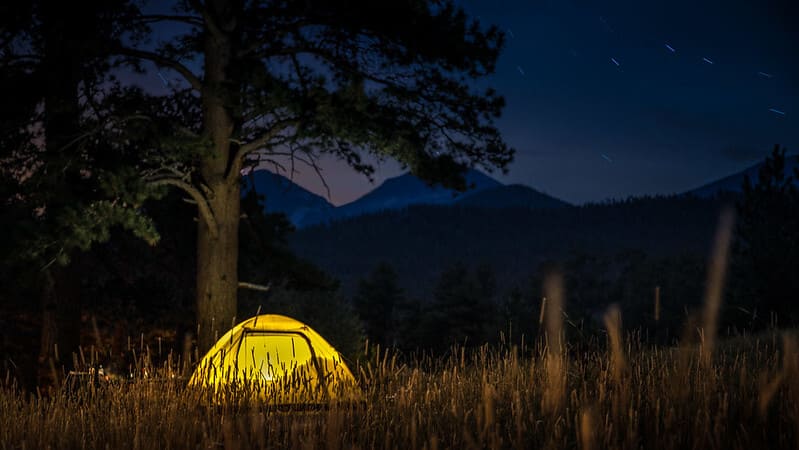
Before heading out for a night of stargazing in Colorado, you’ll need to gather some essential items to maximize your experience.
Here’s a list of what to bring:
- Flashlight or headlamp: Essential for navigating in the dark. Choose one with a red light setting to preserve your night vision.
- Telescope or binoculars: To closely examine the stars and the Milky Way. A telescope will offer more magnification, but binoculars are more portable and user-friendly.
- Phone: Useful for checking weather conditions, finding your way, and using stargazing apps to identify stars and constellations.
- Warm clothes: Even in summer, Colorado nights can get chilly. Dress in layers to stay warm and comfortable.
In addition to packing these items, consider the following tips for a successful stargazing adventure:
- Minimize artificial light: Get away from city lights to see the Milky Way truly. Choose a dark-sky location like Florissant Fossil Beds National Monument or Great Sand Dunes National Park and Preserve.
- Stay hydrated: Bring enough water to last through the night, especially at higher altitudes where dehydration can set in more quickly.
- Pack some snacks: Stargazing can work up an appetite. Bring easy-to-eat snacks like granola bars or trail mix to keep your energy up.
By following these tips and packing the right gear, you’ll be well-prepared for a magical night of stargazing in Colorado, where you can see the stunning Milky Way with your own eyes. Enjoy the night sky!
Locations to See the Milky Way

Colorado boasts some incredible spots where you can glimpse the breathtaking Milky Way. Let’s dive into a few locations that offer prime stargazing opportunities.
Great Sand Dunes National Park is wonderful to see the Milky Way. The park’s sky is one of the darkest in the country, which means you can enjoy jaw-dropping views of the galaxy without light pollution interfering. Just imagine the dunes under a blanket of stars, it is simply magical!
In Rocky Mountain National Park, you stand a good chance of witnessing the Milky Way. To maximize your star-viewing possibilities, head to areas with higher elevations, like Trail Ridge Road or Bear Lake. Just be sure to stay warm and remember your camera!
Black Canyon of the Gunnison National Park: Known for its exceptionally dark skies, this national park provides impressive views of the Milky Way. The South Rim Campground is an excellent spot for stargazing.
Mesa Verde National Park: While exploring ancient cliff dwellings by day, prepare for a fantastic night sky experience. The park’s isolated location helps provide stunning Milky Way views.
Sangre de Cristo Mountains: These majestic peaks over southern Colorado offer the perfect backdrop for your Milky Way experience. Try setting up camp at one of the wilderness trails to stargaze away from city lights.
Impact of Light Pollution

Light pollution affects the visibility of stars and celestial objects, even in beautiful places like Colorado. Imagine looking up at a starless sky, unable to see the Milky Way due to the bright glow of city lights. Outdoor lighting often spills out of urban areas and into the countryside, diminishing the breathtaking experience of stargazing and depriving people of the chance to witness the natural sky darkness.
Cities can, however, combat light pollution by adopting responsible lighting practices. By becoming International Dark Sky Communities, they can pledge to use energy-efficient and well-shielded outdoor lighting. Not only does this help preserve the night skies, but it also has other benefits like:
- Reducing energy consumption
- Protecting wildlife, particularly nocturnal species
- Improving human sleep and overall well-being
Around Colorado, several communities designated by the International Dark-Sky Association are working hard to safeguard precious dark skies. As a result, these regions offer the best opportunities to view the stunning beauty of the Milky Way.
So, next time you want to indulge in stargazing, consider visiting one of Colorado’s International Dark Sky Communities or rural areas with minimal light pollution. By doing so, you’ll support their efforts to preserve the celestial wonders above us and help protect the ever-fading night skies.
Importance of Time Selection
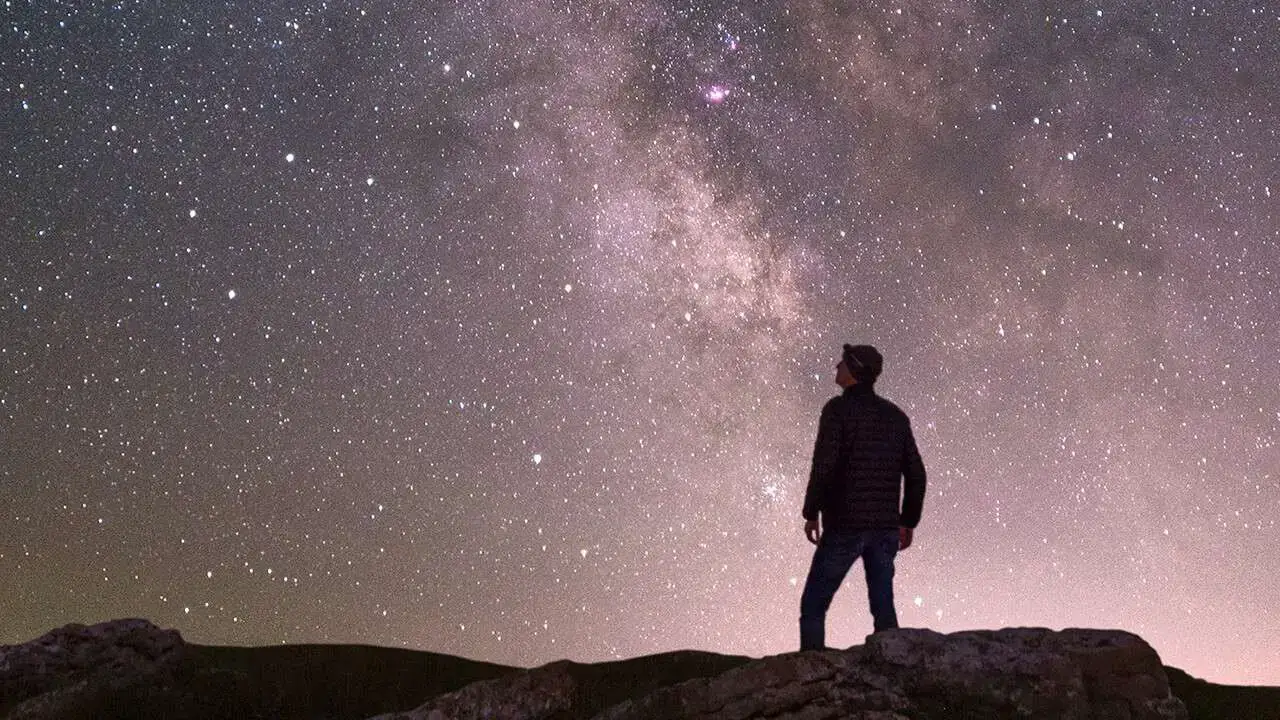
Selecting the right time is crucial for stargazing in Colorado and catching a glimpse of the Milky Way. Consider factors such as sunset and sunrise times, moon phases, and the time of year for optimal visibility.
The Milky Way is the highest and clearest in the evening sky during the summer. In spring, however, you’ll want to catch it in the early morning hours before dawn.
To make things easier, remember the following steps:
- Choose a night with a new moon since moonlight from full moons interferes with visibility.
- Plan your stargazing adventure around the Milky Way season, which typically runs from February to October.
- Be prepared to stay up between midnight and 5 a.m., as the Milky Way is usually most visible.
Here are some additional tips to enhance your experience:
- Watch local weather forecasts to avoid rain and cloudy nights.
- Take note of sunrise and sunset times to plan your stargazing trip accordingly.
- Familiarize yourself with moon phases, as the new moon provides the darkest sky conditions.
Following these guidelines and selecting the best time will increase your chances of witnessing the magnificent Milky Way on your Colorado stargazing adventure.
Stargazing Events and Resources
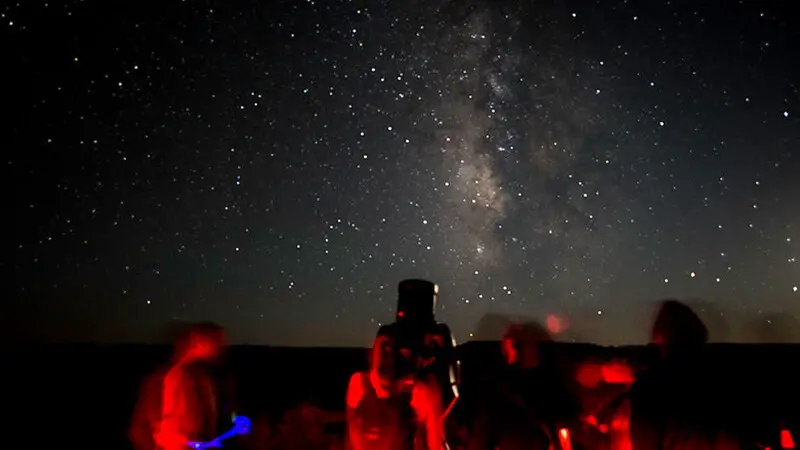
When you’re looking for a place to gaze up at the Milky Way in Colorado, there are plenty of opportunities for stargazing events and resources to help you get started:
National Parks: Colorado has several national parks offering beautiful, dark skies for stargazing. One great option is the Florissant Fossil Beds National Monument, an International Dark Sky Park. The Hornbek Homestead parking lot in the park offers unobstructed views of the night sky.
Observatories: Colorado has a few observatories that you can visit for stargazing opportunities and events. Some popular ones include:
- Chamberlin Observatory: In Denver, this historic observatory offers public viewing nights and stargazing events throughout the year.
- Sommers-Bausch Observatory: Situated on the University of Colorado Boulder campus, this observatory opens for public stargazing on Friday evenings during the academic year.
- Meyer-Womble Observatory: Perched atop Mount Evans, this observatory is one of the highest in the world and gives you the chance to explore the skies with a unique vantage point.
Stargazing Events: Many organizations in Colorado organize stargazing events throughout the year. From astronomy festivals to ranger-led national park programs, something is always happening that brings star enthusiasts together. Some popular events include:
- Star Parties: Hosted by local astronomy clubs, these gatherings provide telescopes and knowledgeable amateur astronomers to help guide you through the night sky.
- Astronomy Talks and Workshops: Typically held at observatories or visitor centers, these events involve presentations on astronomical topics followed by star viewings.
Ranger Programs: Some national parks in Colorado offer ranger-led stargazing programs for visitors. Rangers share their knowledge of the night sky, constellations, and celestial objects and often provide telescopes to help you explore the skies yourself.
So, grab your telescope or binoculars and embark on a stellar adventure in Colorado’s beautiful night skies. No matter your experience level, there are plenty of events, observatories, and national park programs to help you see the beauty of the Milky Way!
Astrophotography in Colorado

Astrophotography is a great way to capture the beauty of the night sky, and Colorado offers numerous locations to admire and photograph the stars. Pack your night vision equipment and a star chart to help identify your favorite constellation, including the Milky Way.
Check out the UFO Watchtower in Hooper in the San Luis Valley. This location is known for its stargazing opportunities and even rumored alien sightings. Imagine getting a great shot of the Milky Way with a UFO in the frame!
Make sure also to visit Westcliffe, home to the Dark Skies of the Wet Mountain Valley and the Smokey Jack Observatory. Here, you can participate in special stargazing events, learn from local experts, and utilize their top-notch equipment.
Here are some practical tips for your astrophotography adventure:
- Choose a location with little to no light pollution for the best view of the stars
- Use a tripod and a manual camera mode (bulb mode) for long exposures
- Bring a red flashlight to preserve your night vision while you set up your equipment
So, grab your camera and head out to one of these fantastic Colorado locations to explore the night sky in a new way. Best of luck capturing those breathtaking shots—you never know when they’ll come in handy for your next conversation starter or desktop wallpaper.
The UFO Watchtower Experience

Imagine a spot where you can stargaze and catch a glimpse of the elusive Milky Way, all while keeping an eye out for mysterious UFOs. That’s exactly what the UFO Watchtower in Colorado offers! This unique attraction is just 2.5 miles north of Hooper on Highway 17.
At the UFO Watchtower, you have the opportunity to enjoy:
- The breathtaking view of the stars, including the Milky Way
- A chance to spot UFOs in the night sky
- An astronomer-led experience for an informative stargazing session
Remember that stargazing is best done on clear, moonless nights. So, be sure to check the weather ahead of your visit. To improve your stargazing experience at the UFO Watchtower, consider packing essentials like a comfortable camping chair, a warm blanket, and a red flashlight to preserve your night vision.
A bonus of visiting the UFO Watchtower includes vortex vibes, adding an air of mystery to your stargazing experience. Whether you’re an avid believer in extraterrestrial life or enjoy quirky fun, you’re in for a memorable time.
In summary, your UFO Watchtower experience in Colorado will give you:
- An intriguing mix of stargazing and UFO-spotting
- Astronomer-led tours for deeper knowledge
- Fun roadside attraction with vortex vibes
Grab your telescope and embark on an unforgettable adventure under the Colorado night sky. Who knows, you might become the next UFO-spotting expert in town!
Frequently Asked Questions
What are the best stargazing spots in Colorado?
Colorado’s top stargazing locations include Great Sand Dunes National Park, Westcliffe, and Black Canyon of the Gunnison National Park. These spots offer incredible views of the Milky Way and are known for their dark skies.
Where can I stargaze in Colorado Springs?
In Colorado Springs, you can have great stargazing experiences at locales like Fox Run Regional Park, Palmer Park, and Red Rock Canyon Open Space. These parks have relatively low light pollution, providing better night sky observation conditions.
What is the visibility of the Milky Way in Colorado’s night sky?
Colorado’s night sky offers fantastic visibility of the Milky Way, especially during new moon phases or late-night hours when the moon is not present. The dark skies in many parts of the state allow for impressive views of our galaxy.
Which dark sky sites are ideal for viewing the Milky Way in Colorado?
Dark sky sites perfect for Milky Way viewing in Colorado include the Westcliffe and Silver Cliff International Dark Sky Community, Black Canyon of the Gunnison National Park, and Ridgway State Park. These locations have minimal light pollution, making the Milky Way more vivid.
Is Garden of the Gods a suitable location for Milky Way gazing?
Garden of the Gods, while a beautiful natural landmark, may not be the best location for Milky Way gazing due to its proximity to urban areas and potential light pollution. For better stargazing, consider heading to the darker sky locations mentioned above.
Are there any night sky festivals in Rocky Mountain National Park?
Yes, Rocky Mountain National Park hosts various night sky festivals and events throughout the year. These events often feature ranger-led stargazing sessions, astronomy presentations, and telescope viewings to help you explore and enjoy the stunning celestial sights.
Summary: Milky Way in Colorado
Thank you for reading my article “Where Can You See the Milky Way in Colorado?”
Colorado offers several amazing locations for stargazing and appreciating the beauty of the Milky Way. Among these locations are the Great Sand Dunes National Park and Dinosaur National Monument, which provide outstanding opportunities for observing the Milky Way and star clusters, nebulae, and planets.
If you’re planning a road trip, visit the Great Sand Dunes National Park, about a 4-hour drive from Denver. From there, consider exploring the fascinating Dinosaur National Monument in the northwest corner of the state, particularly between May and October, when ranger programs and special events are held. Remember, the best time to observe the Milky Way is usually between February and October, between midnight and 5:00 a.m., on nights with a new moon.
By choosing the suitable locations and timings, you’ll be able to soak in the wonder of the night sky and create unforgettable memories under the stars. So, grab a blanket, a telescope if you have one, and your sense of adventure to fully experience the celestial show that Colorado’s magnificent stargazing spots have to offer.
Happy Stargazing!
Read my other articles in my Milky Way series:




